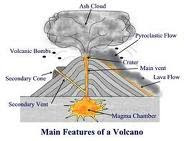
Here is a list of 50 things to do the next time you are bored!
1. Go on a picnic to Nuevo Baztán... you can get there by bike!
2. Go on a walk around Campo Real and take pictures of trees, flowers, dogs, etc.
3. Enjoy an afternoon with someone you love: a friend, your parents...
4. Help someone who needs you!
5. Volunteer at the local animal or homeless shelter.
6. Clean your room!
7. Bake some food you are good at and surprise your friends and family.
8. Play some childhood games, enjoy the memories it brings back.
9. Take your dog (or your neighbour´s)for a walk.
10. E-mail a friend you haven't spoken to in awhile.
11. Do 25 jumping jacks!
12. Look through old family scrapbooks, photo books, and yearbooks.
13. Ask and listen about your grandparents and parents about their lives, learn!!.
14. Go to the movies with your friends.
15. Go window-shopping with your mum/dad/ grandma...
16. Write a poem.
17. Make fresh, homemade fruit juice.
18. Give your dog (or yourself) a relaxing bath.
19. Make dinner for your family.
20. Baby-sit for a neighbour.
21. Have a sleepover party and watch scary movies.
22. Plan a vacation you want to take next summer.
23. Plant flowers anywhere!
24. Sign up for a lesson you liked to learn about.
25. Have a long night walk under the stars!!!.
26. Make a mixed CD of your favorite songs and title it "The soundtrack of my life".
27. Order a pizza, try new ingredients.
28. Splash around in a plastic kiddy pool.
29. Buy some crayons and a coloring book, express yourself.
30. Read a book based on a movie you have seen.
31. Make a scrapbook of your baby pictures, share it!
32. Get a part-time job... enjoy your own money!!
33. Start a diary and write in it everyday.
34. Spend a day at the library.
35. Draw a self-portrait.
36. Make a collage out of old magazines.
37. Run around your town, show you are sportive.
38. Go to a museum.
39. Go out for lunch with one of your parents... or teachers!.
40. Jump in the pool with your clothes on.
41. Eat last night's leftovers for breakfast.
42. Learn to sew or knit.
43. Invite friends over and have a tea party, British? Cool in Valdilecha!!.
44. Swing on the swings at the park.
45. Decorate a white t-shirt with your own design!
46. Smile to everyone today.
47. Learn how to define and spell 5 new words from the dictionary.
48. Make popsicles in your freezer. Invite your friends.
49. Put on the radio and dance.
50. Go camping anywhere you like! Clean up!Don't forget to leave everything as you found it!













